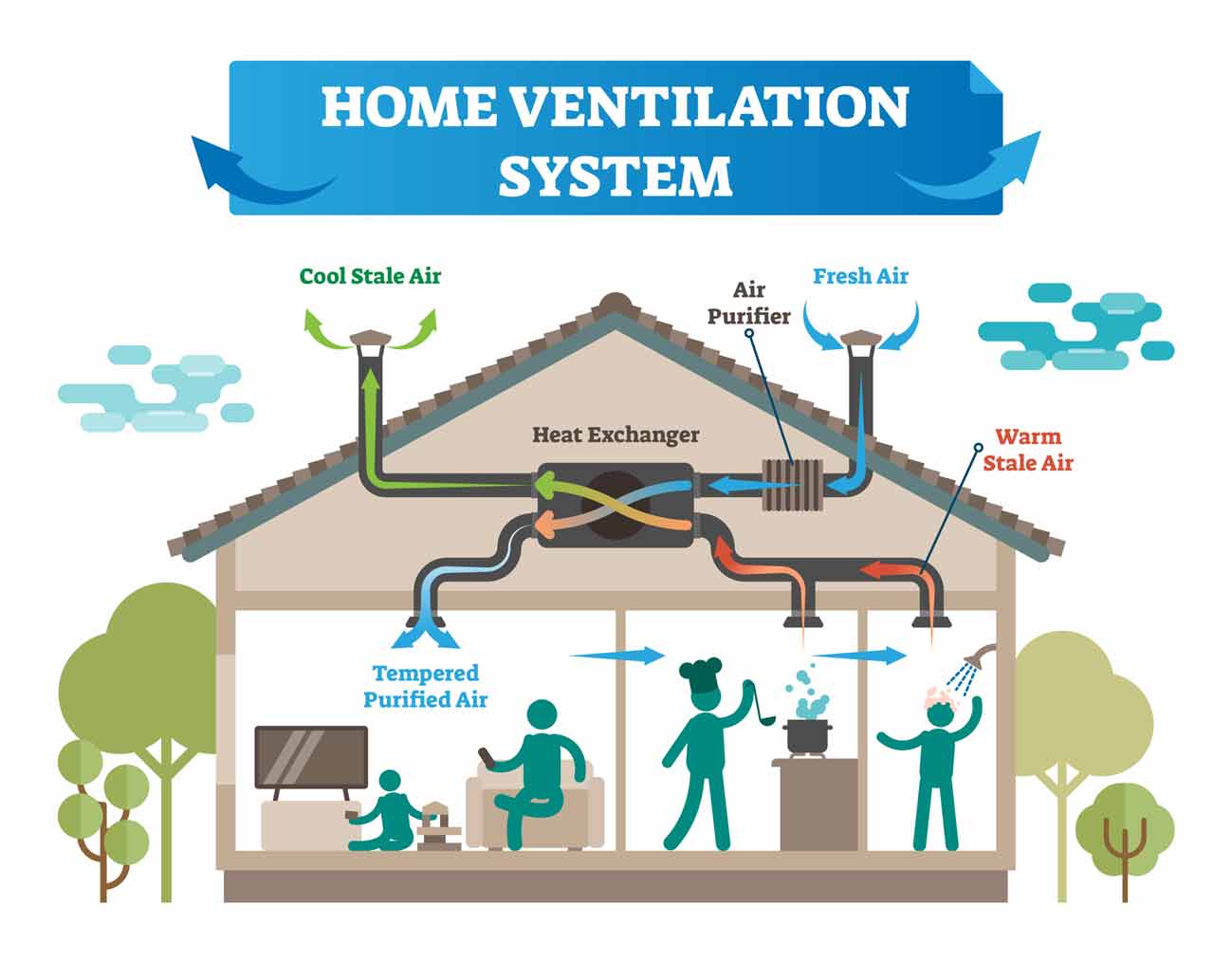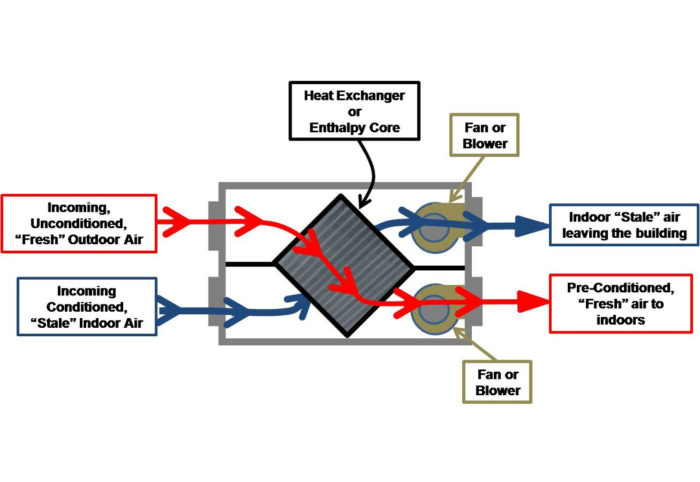How HRV Delivers a Comfortable Indoor Living Environment
Wiki Article
Checking out the Benefits of Heat Recovery Ventilation for Energy Effectiveness in Homes
Heat Recovery Ventilation (HRV) systems provide property owners a practical approach to improving power performance. By recovering warm from outgoing air, these systems can significantly lower heating & cooling costs. In addition, they give a consistent supply of fresh air, improving indoor air high quality and convenience levels. As property owners consider lasting choices, recognizing the subtleties of HRV systems becomes progressively vital. What factors should one assess before making such a financial investment?Recognizing Heat Recovery Ventilation Equipments

How HRV Improves Indoor Air Quality

Energy Savings: The Economic Advantages of HRV
Maximizing power performance, heat recovery ventilation (HRV) systems provide substantial economic benefits for home owners. By recovering and reusing warmth from exhaust air, HRVs noticeably reduce heating & cooling prices. This innovation can bring about power savings of up to 30%, depending upon environment and usage patterns. House owners often see lowered utility costs soon after installment, making HRVs a financially sensible investment with time. Furthermore, many areas provide incentives or discounts for energy-efficient upgrades, even more improving the financial allure. As power prices remain to climb, the cost-effectiveness of HRVs comes to visit site be progressively clear. Overall, the incorporation of HRV systems not just promotes power efficiency but additionally adds to lasting economic cost savings for houses.The Ecological Effect of Heat Recovery Ventilation
A considerable ecological benefit of heat recovery ventilation (HRV) systems depends on their ability to lower overall energy intake. By reclaiming warm from exhaust air and moving it to inbound fresh air, HRV systems lessen the demand for energy-intensive heating and cooling techniques. This decrease in energy demand adds to decrease greenhouse gas emissions, as less nonrenewable fuel source is required to maintain comfy interior temperatures. Furthermore, HRV systems improve indoor air top quality by successfully trading stagnant air with fresh exterior air, lowering dependence on mechanical air conditioning systems that can harm the environment. In general, the application of HRV systems supports lasting living techniques and aligns with worldwide initiatives to fight climate modification by advertising energy effectiveness in domestic settings.
Choosing the Right HRV System for Your Home
How can home owners ensure they select the best heat recovery ventilation (HRV) system for their needs? First, they ought to examine their this contact form home's size and layout, as these factors affect air flow requirements. Next off, assessing the system's effectiveness rankings is essential, as higher ratings indicate much better performance and energy savings. Home owners should also take into consideration installation and upkeep expenses, comparing different brand names and versions for worth. In addition, it's vital to examine noise levels, as some systems run more quietly than others. Consulting with a/c specialists can supply tailored referrals based upon specific home problems. Lastly, analyzing user evaluations and service warranties can help in making an informed choice, guaranteeing that the picked HRV system effectively improves indoor air top quality and energy effectiveness.Regularly Asked Questions

How Often Should I Clean or Keep My HRV System?
The regularity of cleansing or preserving a warm recuperation air flow (HRV) system generally depends on use and ecological factors. Generally, it is recommended to perform upkeep every 6 months to guarantee peak efficiency and air top quality.
Can HRV Systems Help Minimize Humidity Degrees Indoors?
HRV systems can efficiently decrease interior humidity levels by trading stagnant, humid air with fresh, drier air from outdoors. HRV Heat Recovery Ventilation. This procedure helps keep a well balanced interior atmosphere, improving comfort and stopping moisture-related problems
What Is the Lifespan of a Common HRV System?
The lifespan of a typical heat recovery ventilation (HRV) system varies, generally lasting in between 10 to 15 years. Routine maintenance can extend its effectiveness and functional life, guaranteeing peak efficiency throughout its use duration.Exist Any Noise Interest In HRV Equipments?
Sound worry about HRV systems can arise, especially from fan operation. Nevertheless, many modern systems are developed to lessen audio levels, ensuring they operate quietly while preserving effectiveness, which resolves possible disruptions in living settings.Can I Install an HRV System Myself, or Do I Need a Specialist?
The specific contemplated whether to mount the heat recovery ventilation (HRV) system directly or hire an expert. Usually, while DIY setup is feasible, experience assurances my company appropriate capability and conformity with neighborhood building regulations, boosting system performance.Report this wiki page